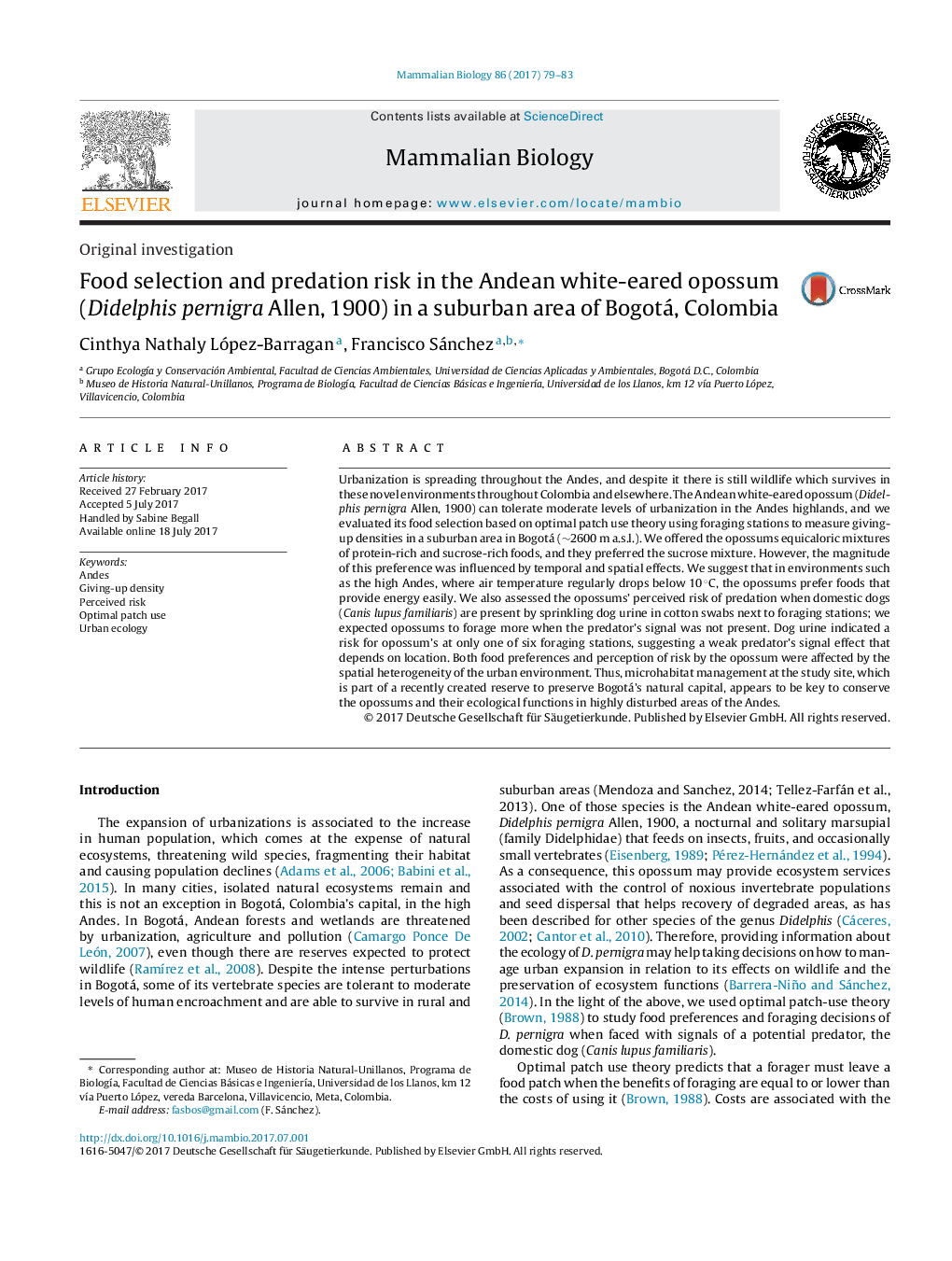| کد مقاله | کد نشریه | سال انتشار | مقاله انگلیسی | نسخه تمام متن |
|---|---|---|---|---|
| 5533759 | 1550461 | 2017 | 5 صفحه PDF | دانلود رایگان |
Urbanization is spreading throughout the Andes, and despite it there is still wildlife which survives in these novel environments throughout Colombia and elsewhere. The Andean white-eared opossum (Didelphis pernigra Allen, 1900) can tolerate moderate levels of urbanization in the Andes highlands, and we evaluated its food selection based on optimal patch use theory using foraging stations to measure giving-up densities in a suburban area in Bogotá (â¼2600 m a.s.l.). We offered the opossums equicaloric mixtures of protein-rich and sucrose-rich foods, and they preferred the sucrose mixture. However, the magnitude of this preference was influenced by temporal and spatial effects. We suggest that in environments such as the high Andes, where air temperature regularly drops below 10 °C, the opossums prefer foods that provide energy easily. We also assessed the opossums' perceived risk of predation when domestic dogs (Canis lupus familiaris) are present by sprinkling dog urine in cotton swabs next to foraging stations; we expected opossums to forage more when the predator's signal was not present. Dog urine indicated a risk for opossum's at only one of six foraging stations, suggesting a weak predator's signal effect that depends on location. Both food preferences and perception of risk by the opossum were affected by the spatial heterogeneity of the urban environment. Thus, microhabitat management at the study site, which is part of a recently created reserve to preserve Bogotá's natural capital, appears to be key to conserve the opossums and their ecological functions in highly disturbed areas of the Andes.
Journal: Mammalian Biology - Zeitschrift für Säugetierkunde - Volume 86, September 2017, Pages 79-83
